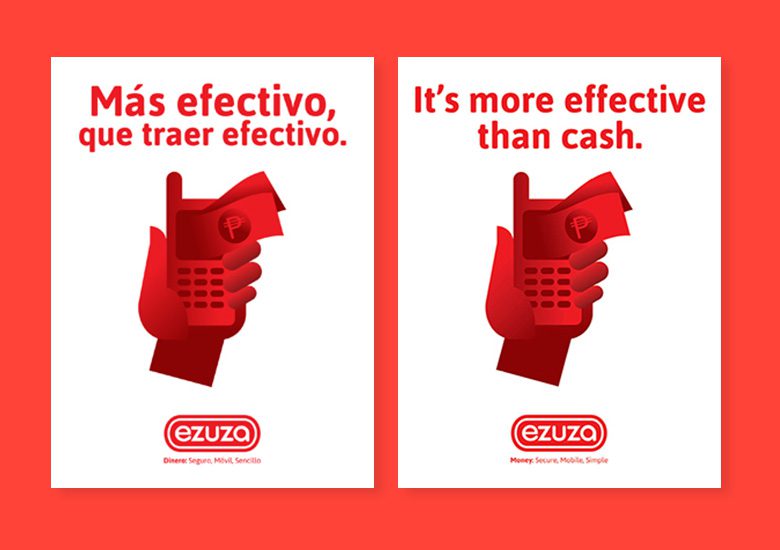Working in unfamiliar languages, however, doesn’t necessarily require translation—at least not in the the traditional sense of the word.
On two recent projects, we were challenged by clients to develop material for use in places where we wouldn’t even know how to order breakfast: Puebla, Mexico, and Beijing, China.
The Puebla project was with Ezuza, a mobile money startup, for whom, among other things, we developed a range of advertising copy and designs to go on bus sides and billboards, in addition to identity strategy and website development.
The Beijing project was with Zest Finance, a machine-learning firm founded by the former Chief Information Officer of Google; we’ve worked with Zest for years, and this time it involved developing a presentation he was invited to give at a conference in China.
For both projects, we did not do what was expected. What was expected was that we’d write the text and then hire someone to translate it into, respectively, Spanish and Chinese.
Our sense is that much is lost in such translation processes. Instead, in both cases we hired bilinguals to co-write the copy with us.

For Ezuza, for example, we asked our colleague, a Mexico City native, what were common slang words for cash money. Among them, we learned, was efectivo, which more generally means effective. We confirmed that Más efectivo que el efectivo would register as a well-crafted play on words; it means, in effect, that their mobile money product is more effective than cash. That’s just one example of the material that developed from our writing sessions.

For the Zest presentation in China, we learned much from a bilingual Chinese-American and a Sichuan native studying in the States. They helped us locate idiomatic expressions and craft original phrases, as well as to source imagery, that would register with the Chinese audience. One thing that stuck with us was that a properly balanced number of characters employed in a given phrase communicates a refined sensibility, much as word choice and pacing might in English.

This co-writing method is one we draw on whenever we are asked to “write” in a language we do not know.
The method has broader applications, as well. When writing material for technology firms, we collaborate with experts to develop language that will register with their peers. Every industry speaks its own language, much as every country and culture does, and co-writing is the best way to communicate effectively in those languages.

